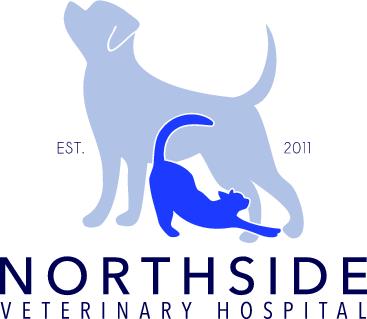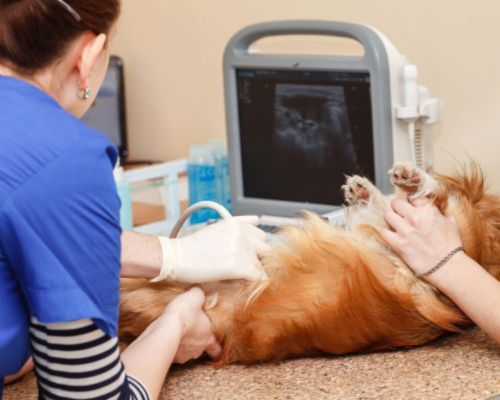Pet Exploratory Surgery
Exploratory surgery is an instrumental and manual means of finding a suspected disease in a particular area when a specific diagnosis is not conclusive using the usual clinical diagnostic non-invasive methods.
Pet Exploratory Surgery in Shawnee, OK
Animals are known to satisfy their curiosity by eating or swallowing all sorts of odd things, ranging from metals to toys. Since they cannot voice the symptoms associated with ingesting these foreign objects, you can only detect this by your pet’s unusual behavior and other signs, such as acute abdominal pain, vomiting, regurgitating, diarrhea, lethargy, anorexia, and sickness.
Diagnostic Tests
As the objects deteriorate or disintegrate in your pet’s digestive system and your pet exhibits these signs mentioned above, further tests will be necessary, including:
X-rays show whether a GI tract obstruction is present, although they are not always conclusive. Chest and abdominal X-rays are taken depending on the symptoms presented.
Blood tests like high white blood cells or low red blood cell count help rule out diseases such as kidney failure, liver disease, or inflammation of the pancreas.
Ultrasound informs your veterinarian whether exploratory surgery is imperative to check for gastrointestinal problems and cancer.
Exploratory surgery
This surgery is done to look inside the body to help make a diagnosis and find the cause of the problem, such as bleeding or belly pain. There are alternative methods of this surgery, and they include:
Abdominal surgery, also known as Exploratory laparotomy surgery, is carried out by making an incision into the abdomen and opening up the belly area to examine the internal organs, collect biopsies, and remove tumors or foreign objects from the stomach or inside the intestines.
This open technique is primarily performed in the following circumstances:
- Emergency situations when time is of the essence
- When a significant portion of the stomach or intestine needs to be visible and accessible, it requires a large incision.
Exploratory Laparoscopic Surgery or Diagnostic Laparoscopy is a less non-invasive and highly efficient procedure to diagnose and possibly treat certain diseases. This surgery is performed using endoscopy, a technique that uses a camera and minimal incisions. A thin rod with an attached camera is inserted through a tiny keyhole incision to visualize the abdominal and pelvic cavities. Real-time photo images from the camera are displayed on a monitor, allowing the veterinarian to view individual organs inside your pet and guide their surgical instruments.
It has several distinct advantages over open abdominal surgery, including,
- It’s quick
- Has a smaller incision site
- Requires less pain medication
Preoperative Preparation
Before the surgery, the surgeon, anesthetist, or veterinary nurse should review a surgical checklist, such as preoperative and intraoperative medications. Other preparations include:
Your pet will be given prophylactically intravenously prophylactically antimicrobials for 30 to 60 minutes before perioperative antimicrobials for existing infections.
What to Do After Surgery
Your pet will have to stay in the hospital for 2 to 5 days depending on their overall health and the reason for the exploratory or if there will be any additional surgeries.
Please start the pain and anti-inflammatory medications as directed on the labels and follow your veterinarian’s post-operative instructions carefully.
If there has been no vomiting overnight, please start feeding your pet small bland meals from the morning 3-4 times daily.
Continue to offer water to drink as required. Give your pet half portions of food for the first two meals. Avoid overfeeding your pet.
Dry food, bones, or any treats should be avoided for at least one month following intestinal or gastric surgery.
Your pet’s abdomen will be sore following the surgery; ensure a quiet, comfortable, soft place to rest.
It would be best not to bathe or allow your pet to swim or get wet until you have been instructed otherwise.
Ensure to monitor redness, swelling, lumps, or severe bruising around the surgical wound on the tummy and check if there are more than a few drops of blood or clear fluid from the surgical wound or any pus from the wound. Inform your vet if you think something is not right with the incision site. It would help if you used an Elizabethan collar to prevent your pet from licking or chewing on the incisions.
For the first 24 hours, your pet will frequently urinate because of the fluids given during surgery, and you should attend to your pet.
Revisit the clinic for assessment of the healing of the wound and to determine whether your pet is allowed to return to regular activity and diet.
For more information, contact Northside Veterinary Hospital today to schedule an appointment.

